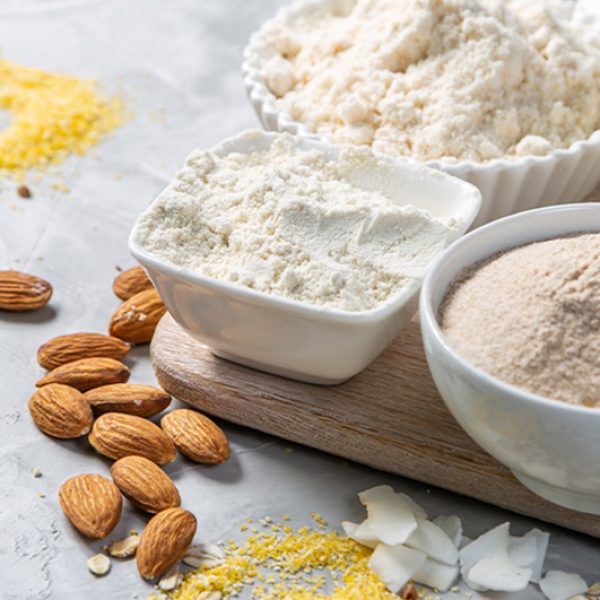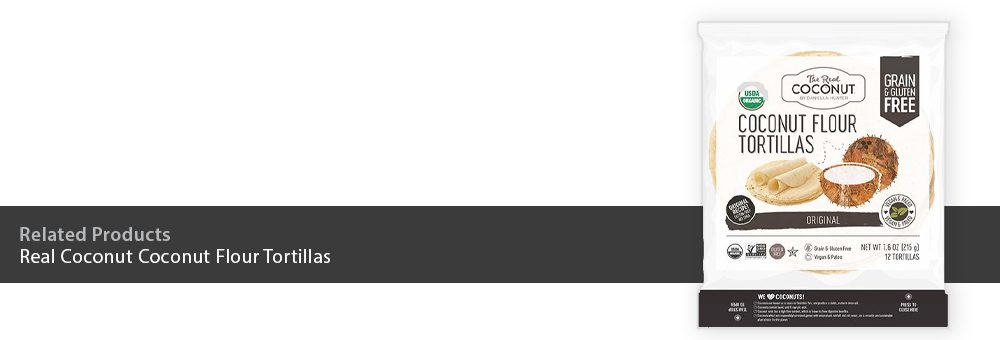

Gluten Free vs. Grain Free
Good digestive health generally equates to overall good health. The growth, repair, and renewal of your body is reliant upon the quality and variety of nourishment that you feed it as well as your gut’s ability to digest.
Gluten and grain free diets have been gaining popularity over the past few years. This may be due to more people learning about gut health and digestive well being, as a vast population of people are realizing their bodies react in digestive discomfort (among other types of reactions) to what they eat.
As we begin to see more and more products on grocery shelves that adhere to these two “diets,” we’ve noticed that the terms gluten free and grain free have occasionally been used interchangeably.
So, do they really mean the same thing?
What is Gluten Free?
Gluten is the key component to many bread, pasta, and baked goods recipes because it helps provide structure. Traditionally, it’s what gives bread dough its elasticity and keeps cakes from crumbling.
The actual gluten content in many products has risen over the years. The hybridization of wheat has become a more common agricultural practice across North America, as the goal of increasing yield and production quantity has become more prominent. However, a side effect of this hybridization is higher gluten content.
Historically, people used ancient wheat grains like spelt and einkorn which have a different composition than modern wheat strains. Bread was also typically fermented before baking using a sourdough culture for digestibility, a practice that is now normally reserved for special artisan breads. The average loaf on the modern market is highly refined, low in nutrients, and difficult to digest.
This could be a main reason as to why so many people either find they have trouble digesting gluten, or find it causes inflammation/reaction in their body. The ingestion of gluten has been known to trigger an immune response which causes inflammation, as certain proteins within the gluten molecule are difficult to digest and cause an imbalance in gut flora.
Celiac Disease is an autoimmune condition in which the body sees gluten as a toxin. When gluten is ingested, even just a few crumbs, the body attacks and damages the small intestines which can lead to malnourishment among other things. Therefore, those who have Celiac must adhere to a strict gluten free diet.
Meanwhile, others who may not have Celiac still may be gluten intolerant or sensitive, meaning they experience some form of inflammation after consuming gluten.
So, what exactly does a gluten free diet mean?
A gluten free diet doesn’t just mean wheat-free, but means removing all gluten-containing ingredients and their derivatives. This includes wheat, rye, barley, spelt, and farro to name a few.
However, gluten free diets can include the consumption of grains such as corn, rice, quinoa, and oats. Rice flour is generally used in combination with tapioca starch and/or potato starch, other flours such as sorghum or millet, and a gum-like xanthan to make baking mixes. Other popular gluten free flours also include teff and buckwheat (which are grains).
What is Grain Free?
Rather than omitting only gluten-containing ingredients, grain free products go a step further by eliminating all grains such as corn, rice, oats, and millet among many others.
Instead of using quinoa, rice, or corn, grain free products opt for ingredients and flours such as coconut and cassava (we also love plantain flour). These ingredients tend to be low on the glycemic index and much more gut-friendly, and are also gluten free.
Although grain free products are inherently gluten free as well, you should still be mindful if you have celiac disease as these products can still be cross-contaminated in the manufacturing process. Be sure the products you purchase are labeled gluten free or certified gluten free to ensure that they have been tested for cross-contamination. Without that label, the product may not be safe to consume.
So, there you have it! While the terms gluten free and grain free can mean different things, a grain free diet overall generally means the foods you consume are also free of gluten.
Real Coconut Story
Real Coconut products are dedicated to the digestive well-being and provide a philosophy of health and eating as a regimen for sustainable living, both personally and for the planet. Real Coconut Products are certified organic and completely vegan and paleo friendly. When responsibly harvested, coconuts are a versatile and sustainable plant choice for the planet. Coconuts are regarded as a source of healthy fats that can be used to produce a stable nutrient-dense oil. Purchase of this product supports boutique farming in developing countries.
Created at the original The Real Coconut restaurant on the beaches of Tulum, Mexico, Daniella Hunter and her team make clean label chips and tortillas that are organic, Non-GMO, soy, grain, gluten and dairy free, nothing artificial! Both the Real Coconut Tortillas and Real Coconut Tortilla Chips are prepared with sustainably made coconut flour and just a few simple ingredients. Her kitchens support the passion and process of Conscious Cooking: globally-minded, plant focused food showcasing low-impact alternatives that steer away from the mainstream crops dominating the global agricultural economy. At Real Coconut, the focus is on crops like coconut, yucca, and plantain that support digestive health and require a relatively low amount of irrigated water.
The Real Coconut Tortillas have a subtle yet delicious flavour that pairs well with savoury or sweet foods and provides a great alternative to traditional tortillas.
The Real Coconut Tortilla Chips come in 3 flavours. Himalayan Salt with a subtle saltiness that compliments the delicious yet mild coconut taste. Lime with a sprinkle of sea salt paired with a refreshingly tart lime that compliments the tasty yet subtle grain free chip. Salt and Vinegar with the same shocking vinegar flavour as traditional salt & vinegar varieties!

